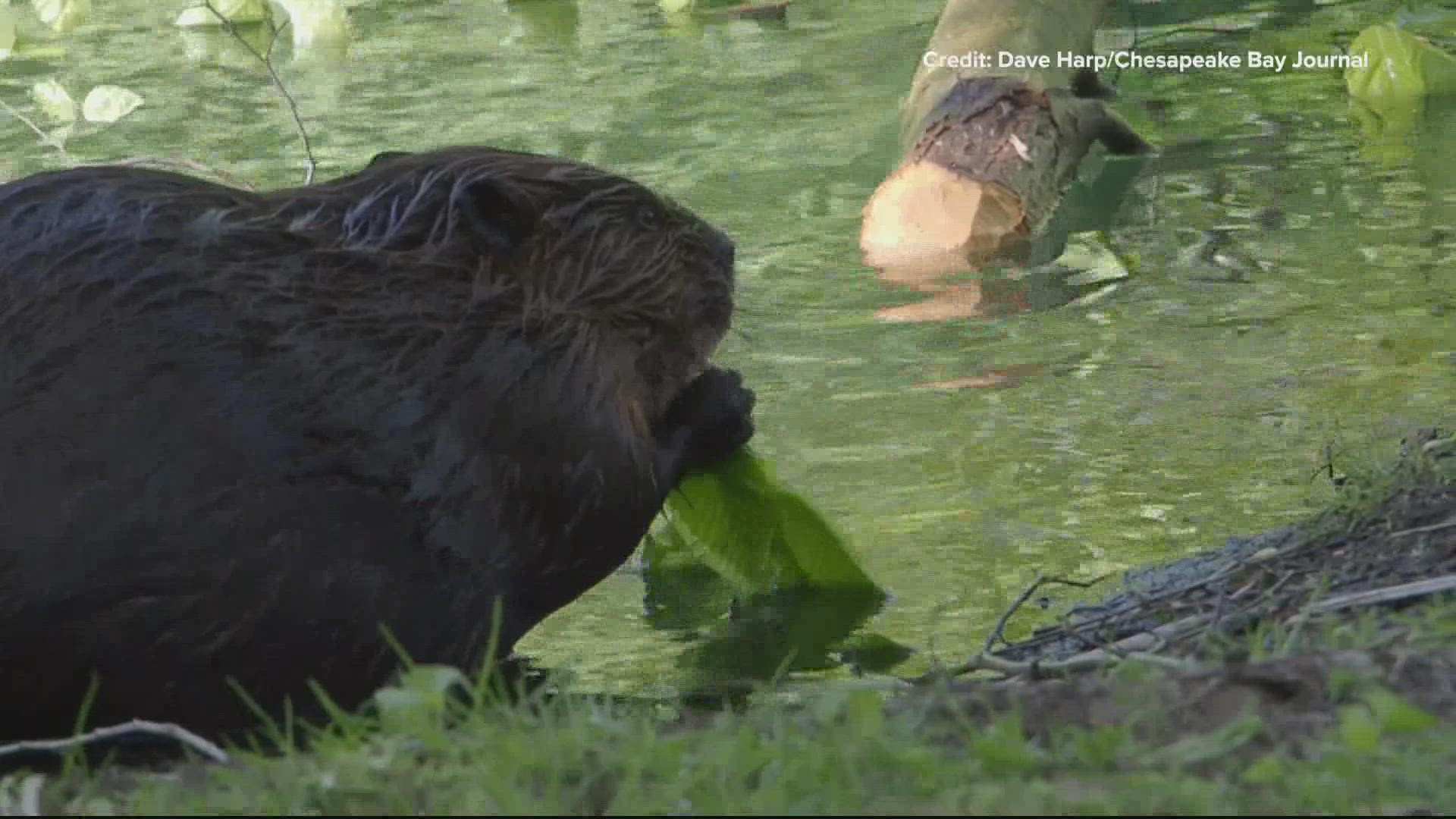MONTGOMERY VILLAGE, Md. — Eight years ago, federal, state, and local officials across our region set some lofty goals to restore the Chesapeake Bay. But with the 2025 deadline approaching, many of those goals remain unmet.
Now some environmentalists are suggesting a voracious little rodent might help. Their plan: Leave it to beavers.
Across six states and D.C., the homes, workplaces, and streets of 18 million people, the rain flows off through channels and culverts, carrying the effluent of civilization out into our treasured Chesapeake Bay. Slowing the flow may be key to restoring the health of America’s largest estuary.
A gentle rodent, trapped and decimated by the millions since colonial times for beaver pelt hats and coats, could help.
"I think beavers, once they really take over a watershed, whether it's a little stream or the Bay, they can make huge difference," said Tom Horton, a longtime chronicler of the Chesapeake's travails, who wrote and narrated "Water's Way: Thinking Like a Watershed," for the Chesapeake Bay Journal. The 44-minute documentary touts beavers' ability to re-engineer stream systems and trap the sediment and pollution that plagues the Chesapeake.
"We call them a keystone species," said Scott McGill, whose company Ecotone, helps replumb streambeds to restore them to a more natural state. "They're as important as wolves, probably more important," he said..
By some estimates, when Europeans first settled along the Chesapeake, somewhere between 60 million and 400 million beavers shared the continent -- maybe as many as 75 on every square mile.
Forest floors and beaver-dammed streams absorbed billions of gallons of rainfall, and the landscape looked far different than it does today. But beaver pelts were so valued that hunting them help push fur traders west even before Lewis and Clarke's famous expedition.
A couple of years ago, McGill’s company, Ecotone, was hired for a nearly $2 million project to restore the streambed at North Creek in Montgomery Village. Within months, the beavers had moved in, building dams, and slowing the flow of sediment and pollution to the Bay more than McGill ever dreamed. And doing it for free.
McGill, a kind of beaver whisperer, says the furry engineers took the watershed back to a time before humans had focused and channeled the flow to rush it toward the Bay.
"Our stream valleys were nothing but beaver pond after beaver pond after beaver pond. And the water just trickled ever so slowly. You know, instead of taking days to get down to the Bay, it would take years," he said.
"I'm not advocating that that we stop trying to do our part and to restore the Bay," said McGill. "What I'm saying is that beavers can be a real partner and a strong ally in our efforts to restore the Bay."
McGill and Horton say beaver dams can trap much of the phosphorus, nitrogen and sediment that's done so much to harm the Bay.
Not that everyone loves the big-toothed mammals who have moved in.
"There is a lot of flooding here, and the mosquitos are so bad in the summertime here, that you can’t walk to your car without being bitten multiple times," said Jen Schiller, who lives in Montgomery Village and was walking with her son and his grandparents along North Creek on a spectacular early spring day.
"If getting rid of the beavers had gotten rid of the mosquitoes we wouldn't have had nearly as many mosquitoes bite me when I was growing up in the Chesapeake Bay marshes," responded Horton.
And McGill says a simple pipe, with a cage upstream to keep beavers from blocking it, can keep a beaver pond from rising so high that it endangers creekside home.
Beavers turn drylands into wetlands, creating habitat for all manner of wildlife. "Ecologically, it would be a feast for woodpeckers for owls, for amphibians, for fish. Great for water quality and great for sequestering carbon. But you know beavers change, they change the habitat," said Horton.
Along Route 210 near Swann Creek Road in Prince George's County, a beaver colony has blocked a culvert, backing up water onto acres of land. Neighbors say the water sometimes floods onto the frontage road.
But it's also made for amazing habitat for herons and turtles. And McGill says it would be fairly simple to engineer a solution to keep the water off the road.
If we want to restore the health of the Bay, humans may need a hand from the only critters who can change the landscape as much as we do.

